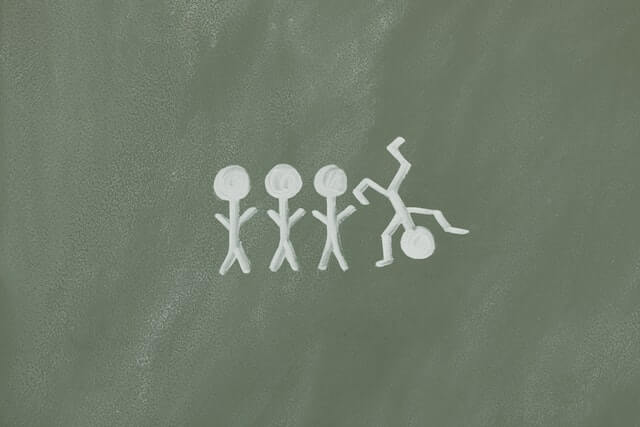ADHD is a complex condition that presents ongoing school, work, and social challenges. It’s marked by three cardinal symptoms: inattention, hyperactivity, and impulsivity. Yet, ADHD symptoms are rarely one-size-fits-all. Symptoms often change with age and may present differently among genders. This article breaks down what ADHD looks like in children, teens, and adults, and why symptoms may shift over time.
ADHD Symptoms in Children
ADHD is on the rise. That’s no secret. According to data from the 2011 National Survey of Children’s Health, 11% of children had an ADHD diagnosis. That was up from 7.8% in 2003 – a whopping 43% increase!
And that was over ten years ago. In 2016 the estimated number of children ever diagnosed with ADHD, according to a national 2016 parent survey, is 6.1 million (9.4%). This number includes:
- 388,000 children aged 2–5 years
- 2.4 million children aged 6–11 years
- 3.3 million children aged 12–17 years
- Boys are more likely to be diagnosed with ADHD than girls (12.9% compared to 5.6%).
Current numbers are likely much higher. The average age for diagnosis in moderate cases of ADHD is age six. But, symptoms may show up much sooner, even as early as age three.1
In children, hyperactivity and impulsivity are typically the first symptoms to stand out. Once kids enter school and academic demands increase, inattention issues may emerge.
Signs of ADHD in Children:
- Trouble focusing
- Easily distracted
- Fidgeting, squirming, or trouble sitting still
- Moves about constantly (or acts as driven by a motor)
- Difficulty playing or engaging in activities quietly
- Talks out in class
- Interrupts frequently
- Difficulty waiting for one’s turn

Does your child show ADHD symptoms?
ADHD Symptoms in Teens
As children with ADHD mature, their symptoms often shift. For some, childhood symptoms may fade in intensity or become less problematic. For others, the responsibilities that come with growing older may trigger new symptoms to emerge. So what does this look like? Well, for one hyperactivity tends to diminish in the teenage years, or it may present more as an ongoing restlessness. But, symptoms of inattention and impulsivity often linger. This can create significant challenges at home and school, as well as in social life.
Signs of ADHD in teens may include:
- Difficulty focusing on schoolwork
- Trouble finishing tasks
- Missed assignments
- Careless mistakes on schoolwork
- Time management issues
- Forgetting things
- Losing personal items
- Trouble with organizational skills
- Poor self-control
- Increased emotional sensitivity
- Relationship issues
- Increased parental conflict
How common is ADHD in teens? In 2011 the lifetime prevalence of ADHD for adolescents aged 13 to 18 was 8.7%.1 But again, that number has likely gone up since then.
ADHD Symptoms in Adults
Now that we have a clearer idea of how ADHD manifests in children and teens, what about adults? It’s estimated that around 4.4% of American adults have ADHD.1 But keep in mind, there is a lot of undiagnosed ADHD in adults. Nowadays ADHD is on everyone’s radar, that wasn’t always the case. If a person grew up when there was a lack of ADHD awareness, diagnosis could easily fall through the cracks. Plus, for teens and adults to receive a diagnosis, symptoms must appear before age twelve2.
Adults with undiagnosed ADHD may have a history of poor school and work performance. They may struggle to pay attention during meetings, conversations, and lectures. But they may also have difficulty keeping up with school demands and work deadlines. People with undiagnosed ADHD may also have a rocky relationship history. Over time this can be destructive to their emotional well-being and self-esteem. Inattention, impulsivity, and restlessness may remain in adults years. It’s just that now those symptoms are met with the new challenges that adulthood brings. Work stress, financial concerns, and family demands can weigh heavy on adults even without ADHD. These pressures may bring symptoms to the surface.
Signs of ADHD in adults may include:
- Difficulty sustaining attention
- Getting easily sidetracked from tasks
- Difficulty managing and meeting deadlines
- Misplacing important items often
- Avoiding tasks that demand sustained mental effort
- Forgetful in daily activities
- Low frustration tolerance
- Frequent mood swings
- Frequent injuries or accidents
- Substance abuse misuse
- ADHD Symptoms in Women: Are They Really That Different?
Age isn’t the only factor that can change ADHD symptoms – gender can too. ADHD in boys is far more common than in girls. In fact, males are four times more likely to get an ADHD diagnosis than females. But why? Some say it’s because females only have signs of inattention. Yet, that’s not entirely true. Females do present with symptoms of hyperactivity and impulsivity. They’re just often more subdued than males, making them easier to gloss over. Plus, ADHD symptoms in females can worsen during hormonal changes. Women may notice symptoms increase during menstruation, pregnancy, or menopause. So what does ADHD look like in women and girls? Here are some common signs4:
ADHD symptoms in women and girls
- Being easily distracted or disorganized
- Lacking in effort or motivation
- Trouble with emotional regulation
- Increased risk of social problems (especially bullying)
- Difficulty with interpersonal relationships
- Poor self-esteem
- Academic underachievement and increased school dropout
- Elevated risk of substance abuse
- Earlier onset of sexual activity/more sexual partners
- Increased risk of STIs and unplanned pregnancy
Living With ADHD: Treatment Options
ADHD presents many challenges to school, work, and home life, no matter your age. And each person’s symptoms fall on a spectrum. After all, everyone gets distracted and has trouble focusing at times. However, severe ADHD symptoms can make it difficult to function in day-to-day life. That’s when it’s time to speak with a doctor or psychologist to look into a potential diagnosis. ADHD is typically treated with medication, the most popular being central nervous system stimulants. These drugs stimulate brain activity by increasing the neurotransmitters dopamine and norepinephrine. Stimulant drugs can be powerful tools to help people with ADHD manage symptoms. But unfortunately, they come with a long list of side effects, including sleep problems, loss of appetite, irritability, headaches, and upset stomach. Luckily, there are several natural nutritional options for ADHD. Research shows cognitive behavioral therapy (CBT) can improve symptoms in teens with ADHD5. CBT helps build awareness of the thoughts that trigger behaviors and can even teach problem-solving and relaxation techniques. In addition, there are a variety of natural supplements that can address ADHD symptoms at the nutritional level without harmful side effects. You can read about them by downloading this ADHD White Paper: Clinically Proven Alternatives for Treating Inattention, Hyperactivity, and Impulsivity.
Implementing certain lifestyle habits can be powerful medicine as well. Daily exercise, getting quality sleep, cleaning up your diet, and taking targeted dietary supplements can have big benefits.
The Takeaway
So now, when someone asks you, “What does ADHD look like?” you can tell them the honest truth: It depends. Inattention, hyperactivity, and impulsivity are the common threads of ADHD. However, ADHD is not a cookie-cutter condition. Symptoms vary depending on both age and gender. Some people’s symptoms may lessen over time. For others, the transition between childhood, adolescence, and adulthood may shift symptoms due to rising school demands, social pressure, and work stress. ADHD can be challenging – there’s no doubt about that. Yet, you can manage your symptoms and enhance your overall quality of life with the proper treatment and support.



